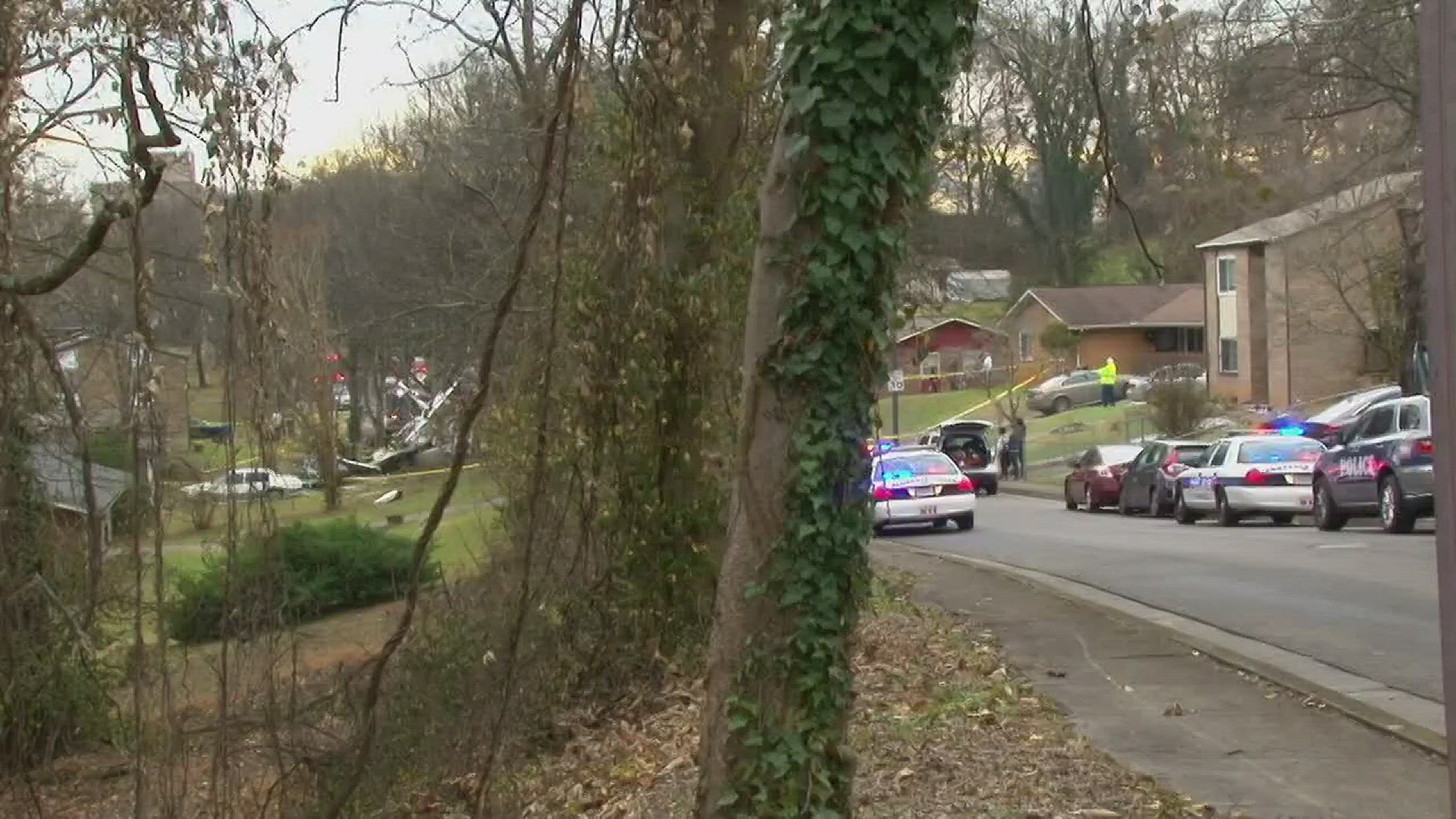Moments before it crashed, the twin engine plane that went down Dec. 19 in East Knoxville was practicing maneuvers that included a simulated engine failure, a preliminary National Transportation Safety Board report shows.
Michael Spinazzola, the student pilot at the controls, was practicing maneuvers for his upcoming commercial multi-engine check ride when the Piper Aztec crashed in trees off Groner Drive, according to the report.
On board that afternoon besides Spinazzola were Gerald Marotta and Robert Gintz, all from the Knoxville area. The plane was registered to Lakelizard Aviation in Seymour.
They were trying to land at Downtown Island Airport at the time of the crash. After the crash, the flight instructor noticed "the left fuel selector was in between the on and off position."
As part of the practice session, the student pilot had simulated engine failure, the report states. He cut the left engine's manifold pressure to 12 inches. After finishing the maneuver, the Piper came around for a landing, but it was too high.
As the student flew the plane, another of the men served as the multi-engine flight instructor, according to the report.
To adjust for the landing, Spinazzola "retarded" the right engine to idle, chose full flaps and began a rapid descent.
Because the plane had crossed the runway threshold for landing, the instructor called for the plane to go around and try again.
"Shortly after initiating the go-around while making the left crosswind turn the student said he had lost the left engine," the preliminary report states. "The (instructor) stated that he observed that the left prop was stationary and said, 'I have the controls.' "
He asked Spinazzola to restart the engine while he focused on flying the airplane.
The instructor told NTSB authorities that in his judgment he needed to hold his airspeed at 80 mph, considered minimum control speed, while banking right and trying to avoid terrain rather than attempt to lower the nose with the left propeller unfeathered to pick up speed. To do so otherwise would have resulted in rapid loss of airspeed, he told investigators.
The left engine wouldn't restart and they were too low to make it back to Downtown Island.
"Approaching the residential area, (the instructor) maneuvered the airplane to avoid a house and impacted trees. The trees stopped the forward movement of the airplane and it fell to the ground, coming to rest on top of an automobile," the NTSB report states.
It was when the instructor went back to the plane, after the crash, to shut off the fuel and electrics that he saw the left fuel selector was in between the on and off positions, the report states.
The NTSB did not go to the accident scene, the report notes.
Gintz and Marotta suffered minor injuries and were treated at University of Tennessee Medical Center. Spinazzola suffered more serious injuries that required hospitalization.
No one on the ground was injured.
An FAA spokesperson told 10News that the pilot did not file a flight plan but did have some communication with air traffic controllers.

